Shotguns are not everyone’s favorite weapon of choice when deciding what weapon is the “go to” device for protecting the castle or ourselves.
First, they are unwieldy and awkward. They are loud and have a lot of recoil that, for most people, may be unacceptable. Buckshot is the preferred round while Shotgun slugs, according to some, are not a good choice for home defense in general, as they have the capability to over-penetrate a human body and common building materials. The same can be said; however, of handgun, carbine, and rifle rounds.
I have several shotguns in 12 and 20 gauges and two of them have deer slug barrels in both 12-gauge and 20-gauge. Both are dedicated sabot slug guns. The remaining shotguns are all smoothbore with a Mossberg 500 12-gauge and a 20-gauge dedicated to home defense. Of the two home defense shotguns, I have come to favor the 20-gauge over the 12-gauge for a number of reasons; It is light (about 7 pounds dry), the recoil with rifled slugs is easily managed, the muzzle flash is less, the muzzle blast sound level is less, and the wife will actually shoot it. When compared to a 12-gauge, the 20-gauge delivers 75% of the lead with a recoil that is 40-50% less. This is equivalent to the ballistic force of being hit with two .44 Magnum rounds simultaneously. In addition, the reduced recoil of the 20-gauge is conducive to accurate, rapid shots.
In general, the working barrel length for a shotgun slug round is somewhere in between 18 and 20 inches with the rest of the barrel adding drag to a slug or otherwise affecting the shot pattern for buck and bird shot. A 24” inch rifled barrel seems pretty much standard for a deer slug barrel. For a defensive shotgun, the 18.5″ barrel seems standard with barrel lengths out to 20″ becoming more standard, and which may allow a couple of more rounds stoked in the feed tube.
The smooth bore shotgun is a tradeoff for rifled slugs and the rest of the stuff that can be loaded into the breech (specialty rounds, for example). Shotgun slugs were originally developed as a convenience to the hunter who already owned a shotgun and did not want to purchase a rifle for hunting game. In fact, some states require that shotguns be used for hunting in heavily populated areas. Of the two types of barreled shotguns, the smoothbore is the more common.
When it comes to slugs, I was always in a quandary about what slug I should be using in my shotguns. The 12-gauge is easier to experiment with because of the proliferation of ammunition that is available for it. The 20-gauge – not so much, as the 20-gauge is limited in the slug and buckshot categories – but not as much as you might think. Moreover, just like in handguns and rifles, the correct selection of ammunition for the gun can make a world of difference.
The first basic lesson that I have learned is that Sabot slugs are for rifled barrels and rifled slugs are for smooth bored barrels. They can be interchanged (sabot in a smoothbore barrel and rifled slug in a rifled barrel); however, the results may not be worth the interchange and would probably cause more aggravation than not. It has been said that a rifled slug can be used in a rifled barrel, and produce some good results, but a lot of it depends on the ammunition. Some ammunition, like the Remington “Buckhammer” sabot slugs can (supposedly) be fired out of a rifled or smoothbore barrel, due to the slug’s design, with good accuracy.For this write-up, I wanted to concentrate on the 20-gauge smoothbore shotgun. While the 12-gauge is still the favorite for most when it comes to defensive purposes, those who are recoil sensitive or of small physical stature, may favor the 20-gauge over the 12-gauge. Note that only 2 3/4″ length shells are under discussion. Most 3″ 20-gauge ammunition, in slug form, is usually sabot rounds and I would like to keep the presentation strictly to rifled slugs for the smoothbore. The sabot slug, in comparison to the rifled slug, has about half the frontal area of the rifled (Foster) slugs, which translates to half the drag, and double the penetration. Lighter, faster slugs were also possible, allowing for a flatter trajectory and longer range. Sabot shotgun slugs are definitely not recommended for indoor defensive use and are in a class of their own that I may address in a later write-up.
Lately, I have been shooting the Remington 20 Gauge Slugger 2 3/4″, 5/8oz. Rifled Slug. At 7 yards, the POI is almost POA with a 0.5-inch drop @ 25 yards. The round however really starts to fall off with -2.1″ @ 50 yards, -5.3″ @ 75 yards, and -10.4″ @ 100 yards. At about 1750 fps out of the chute, the Remington 20 Gauge Slugger 2 3/4″ 5/8oz. Rifled Slug will just about handle anything that steps in front of it. My Mossberg 500 20-gauge is laser-equipped and the shotgun zeroed at 50 yards with this ammunition. With the zero at 50 yards, the slug will hit about -3.2″ at 75 yards and is just beyond the edge of my 3″ window of opportunity. This round is readily available and easily found at most sporting good stores. I have shot 3″ groups at 25-yards with this round with the help of the laser. Remington® introduced its first high-velocity Foster-style lead slug. This higher velocity slug exits the barrel at 1800 fps, 13% faster than standard 1 oz. slugs out of a 12-gauge barrel. The 1/2 oz. Slugger High Velocity delivers 200 ft-lbs more energy at 50 yards with flatter trajectory. For the smoothbore 20-gauge shotgun, only a 2 3/4″, 1/2 oz. lead slug, is available. This round, because of it capability of over-penetrating at close distances, would not make a good indoor-defense round. Another rifled slug round that would not be good for indoor-defensive use is the Federal Power-Shok® Rifled Slug. The Federal Power-Shok® Rifled Slug is a round that pushes the limits of the 20-gauge rifled slug. A 3/4-oz. slug exits the muzzle at 1600 fps, has a relatively flat trajectory, is designed for a 100-yard zero, and has just enough energy to take down a deer at 125 yards. Designed specifically for smooth bore barrels but can also be used in rifled choke tube barrels or fully rifled barrels. The following are some statistics regarding this round:Velocity/Energy:
Muzzle: 1600 fps/1865 fpe
25 yards: 1426 fps/1482 fpe
50 yards: 1278 fps/1190 fpe
75 yards: 1158 fps/976 fpe
100 yards: 1068 fps/831 fpe
125 yards: 1002 fps/731 fpe
Trajectory (assumes a 0.5 sight height):
25 yards: +1.5
50 yards: +2.4
75 yards: +2.0
100 yards: 0
125 yards: -3.9
Fiocchi of Italy offers the Aeroslug Trophy Slug, and which is recommended for both smooth and rifled barrels. The Fiocchi Trophy slug, for the 20-gauge weighs 7/8 ounce and is a 2 3/4″ shell. Muzzle Velocity is around 1,300 fps. This round is on my list of shotgun slugs to be used for indoor defensive use. The round is hard to find and I have only found it on the internet.
There is also the Winchester® Supreme Rackmaster Rifled Slug: 20 ga. 2 3/4″ 7/8 oz. Muzzle Velocity: 1550 fps, Muzzle Energy: 1920 fpe. This is a high-velocity slug intended for deer.Also, NobelSport Law Enforcement Shotshells provide a top quality product for both security and law enforcement professionals. This round looks promising as an indoor defensive round. They are packaged in 10 round cardboard boxes and are made in Italy.
Technical Information:Gauge: 20
Shell Length: 2-3/4″
Slug Type: Lead Slug
Slug Weight: 4/5 oz
Ballistics Information:
Muzzle Velocity: 1350 fps
All of the aforementioned rounds are for smooth bore shotguns, as would be more commonly found in most homes as compared to a rifle-barreled shotgun. For defensive purposes, the smoothbore shotgun is the most popular. Of the above rounds, the NobelSport looks to be the most promising as this round is accurate at 25-yards with little recoil as compared to other loads. It is, however, harder to find than Remington or federal.
For distances greater than 50 yards up to 75 yards, and depending upon the ammunition used, one might have to compensate for targets closer or farther. Then again, there is not a lot of compensation for up to 50 yards in most cases, as with handgun and rifle ammunition, some rounds shoot flatter than others.
There are quite a few reduced recoil slugs for the 20 gauge, but they seem to be for rifled barrels (sabot) slugs. Can you shoot sabot slugs out of a smoothbore barrel? Well, yes, you can, but why would you? It would be nice if manufacturers could see fit to oblige us with a reduced recoil rifled slug for smoothbore shotguns, as many youths, smaller framed, and recoil-sensitive people are discovering the world of the 20-gauge.
Penetration:
The degree of penetration, with regard to walls, may surprise you when shooting a shotgun slug such as the Remington 20 Gauge Slugger 2 3/4″, 5/8-oz (273.437499999 grains) Rifled Slug (my short-range shotgun solution). In one test, and at a range of 21 feet, the “Slugger” penetrated 12 squares of wallboard spaced 1″ apart. The degree of penetration was actually less than a 9mm, .40 S&W, .45 ACP, and M-193 out of an AR (all penetrated 12 panels of wallboard plus some water jugs placed behind the 12 panels). The reason for the surprisingly lack of penetration is quite simple.
Consider the 9mm round (9×19mm Parabellum, 0.356 in diameter). The following are the results of ballistic gelatin testing (common performance parameters):
- Remington Golden Saber JHP: 147 gr., 990 ft/s (muzzle velocity), 320 fpe (energy), 0.62 in (expansion), 14.5 in (penetration).
- Speer Gold Dot JHP: 124 gr., 1,310 ft/s (muzzle velocity), 472 fpe (energy), 0.70 in. (expansion), 13.25 in (penetration).
Also, for comparison purposes, consider the Remington Gold Saber .40 S&W, 180-grain Brass-Jacketed Hollow Point
- Golden Saber™ MV @ muzzle: 1015, MV @ 50-yards: 960, MV @ 100 yards: 914
- Golden Saber™ FPE @ muzzle: 412, FPE @ 50 yards: 368, FLP @ 100 yards: 334
The 20-gauge bore diameter is about 0.614″ (15.6 mm) and is almost twice that of the 9mm’s diameter. We have a large round with a lot of frontal area leaving the barrel of a shotgun at about 1,580 fps (Remington Slugger) as compared to a .356 round leaving a 4″ pistol barrel at about 1,310 fps). The larger frontal area of the 20-gauge slug equates to more drag on the round than would be for the 9mm round (regardless of bullet configuration).
The benefit of the larger round is, of course, blunt force trauma and a large wound channel. While the 9mm round may be capable of expanding to 0.70″, the 20-gauge slug essentially starts at that point. However, and due to the design of the Foster-style lead slug, the shotgun slug is more prone to breaking up rather than expanding. In effect, there will be a shallower, but larger, wound cavity than with the 9mm round. There may be through-and-through penetration or a massive energy dump in the body, depending on what the slug strikes. Sabot-type shotgun slugs are better at retaining mass but there again, I am writing about the smoothbore shotgun and rifled slugs. It is the sheer mass and cross sectional size of a full caliber shotgun slug round that makes it so effective. Even a 20-gauge slug has more weight and size than any fully expanded rifle or pistol caliber projectile.
The 20-gauge rifled slug may not be any more intrusive to your interior walls that the 9mm defensive round and probably less so if you were shooting 9mm of FMJ design (with the exception of a larger hole, of course). While slugs are short-range ammunition, all slugs do carry lethal energy beyond 200 yards. You must exercise the same care when using slugs just as you would use with a rifle or handgun.
Just Point and Shoot?
The old adage about just pointing the shotgun, pulling the trigger, and hitting your target just will not fly – especially when shooting slugs.
The sights on most smoothbore shotguns are rudimentary at best; plain bead front sights somewhere near the muzzle. These days, even shotguns intended for Turkey have a means to mount optics and rifled deer barrels are coming equipped with extensions for mounting optics and most rifled deer barrel have front and rear sights since these barrels are intended for use with sabot slugs. Later model Mossberg smoothbore shotguns come with drilled and tapped holes on the receiver for mounting optics. My Mossberg 20-gauge defensive shotgun is equipped with a laser system, which leads me into the next phase of this write-up – improving accuracy.
Accuracy is Important:
To put it simply, we must hit what we are aiming at. A shotgun that shoots slugs is not any different from a pistol, revolver, or rifle. Accurate shot placement is highly important if not critical. There is a vast difference between knowing what direction your barrel is pointed and pointing to a target in that direction.One such method to help in the accuracy department is the use of chokes. By using a choke, the shooter can customize the shot pattern at various ranges for different applications. Many shotguns, even those deemed “tactical” in nature, are being sold with an internal choke already installed. Commonly, the choke will be a “cylinder choke”, which essentially means that no change in the bore size at the muzzle end has occurred. However, when the shotgun is to fire slugs, any restriction in the bore will spell change, but that can be a good thing.
As responsible shooters, we have to account for every round we fire. This leads to a real problem in the general use of buckshot. While #00 buckshot is a tremendously effective man stopper, with cylinder bore shotguns it just simply cannot be used for targets beyond 12 to 18 yards, depending on the gun and the shooter. Targets beyond the effective range of your buckshot require a transition to a slug in order to ensure you do not have stray pellets going past your attacker. What is needed is a barrel choking system that will tighten your pattern with buckshot and provide better accuracy with slugs while extending the useful range of your shotgun.
With that said, the Improved Cylinder is the choke that has the best benefit for slugs. This choke size has a few thousandths of an inch of restriction. Improved Cylinder choke is alright for all smoothbore slugs and can enhance accuracy and velocity by improving barrel gas seal and forcing the slug to center itself in the bore. In fact, there are chokes specific to shooting slugs and have a rifling to assist in stabilizing the rifled slug. I cannot attest to the effectiveness of such chokes but if they actually improve accuracy, they are all right with me. An Improved Cylinder choke will also tighten up the pattern of buckshot loads. With that said, I have ordered an Improved Cylinder for my Mossberg 500 20-gauge field barrel for evaluation. This comes on the heels of having a Poly-Choke mounted in my Mossberg 500 12-gauge barrel and which I consider a failure. That is another story, however.
While we are on the subject of patterning, let me get off the main topic for a bit and tell you this; ALL shotguns pattern differently and their patterns change depending on the load. DO NOT take this lightly. You must pattern YOUR shotgun with a given load, and stay with the load that patterns best in YOUR GUN. As the ranges increase, the likelihood of the pattern passing completely around your intended target increases. Fortunately, a simple change in load can sometimes fix this. You need to know, BEFORE THE GUNFIGHT, what your gun will do and how far out it will do it. For the 20-gauge, I agree with Chuck Hawks and recommend the following: The 20 gauge 3″ shell Federal “Classic” #2 buckshot (F207-2-5PK) with 18 pellets, or the Winchester “Double XX” Magnum #3 with 24 pellets (X203C3B). If your gun cannot accept 3″ shells, or you want less recoil, choose the Remington 2 3/4″ #3 with 20 pellets (SP20BK5PK-3). All of these loads provide definitive short-range stopping power. My shotgun patterns well at 21-feet with the Remington #3 Buckshot load. This load can usually be found on most sporting store shelves. The Federal “Classic” #2 buckshot (F207-2-5PK) is harder to find.
For shooting slugs, I consider optics a must for garnering better accuracy out of the shotgun. My Mossberg 20-gauge defensive shotgun is equipped with a Center Point laser system, which I consider excellent for my indoor purposes. The laser negates having to sight down the top of the shotgun. I can keep both eyes open, scan for the target, click the laser on and the pinpoint dot tells me where the round is going to hit. I zeroed the shotgun at 50 yards, which would be beyond the maximum distance indoors in the house. With this setup, and if I do my part, a 3″ group at 25 yards becomes easy. A COM POA should be effective whether using buckshot or slug ammunition. The laser is good for 50 yards with indoor lights and up to 200 yards outdoor at night.When moving outdoors during bright sunlight; however, the red laser is useless beyond 40 yards and I would have to consider a different sighting strategy (better open sights, scope/laser combo, tube red-dot, or holographic red-dot). Within about 40 yards, though, I have no issues with the laser. After all, this particular shotgun is for indoor home defense and not for hunting. I have other guns for hunting.
Some tactical smoothbore shotguns are now offered with rifle type sights. Of the 20-gauges, the Mossberg SA-20 Semi-Automatic Tactical shotgun is a good example. The Mossberg is at least a good step in the 20-gauge defensive class of shotguns that many are considering in lieu of the heavier recoil of the 12-gauge. The rear sight on the Mossberg is adjustable for both elevation and windage. I consider the ghost sight (or peep sight as some refer to it) as one of the best sighting systems around. Another feature of the SA-20 is that it is semi-automatic, which automatically means a reduction in recoil, which translates to better control of the shotgun for fast follow-up shots (if need be).
While on the subject of recoil, the felt recoil of the 20-gauge when shooting slugs is, of course, subjective to the shooter. In my opinion, the felt recoil from the 20-gauge falls somewhere between the .243 and .270 rifles while being a strong push rather than a hard and sharp slap. With that said, the felt recoil is far less than a 12-gauge firing slugs while being a whole bunch easier on your shoulder.
Summary:
Intended as a primer, this write-up targets those who are considering a home shotgun in general and the 20-gauge smoothbore shotgun in particular and who are curious about slugs for the 20-gauge smoothbore shotgun.
Although some may disagree with using slugs in a shotgun intended for defensive purposes, shotgun slugs do have a place in the area of self-defense. A smoothbore “slug gun” with rifle sights can shoot groups in the 3″ (6 MOA) range at 50 yards/meters, making them satisfactory deer hunting and self-defense weapons at short range.
Select the slug ammunition for your 20-gauge smoothbore that will give you the best accuracy. In my Mossberg 500, the Remington “Slugger” seems to work the best for (short-range) indoor purposes but the round has a problem of its own, as I mention later.
You can shoot a sabot slug through your smoothbore, but it does not increase accuracy and cost more. Save the sabot slugs for rifled deer barrels.
The use of an Improved Cylinder choke may help the accuracy of the shotgun when firing slugs as well as tightening patterns when firing buckshot or birdshot.
I agree with Chuck Hawks, up to a point, that shotgun slug loads fired from smooth bore barrels manage to combine the worst properties of any projectile: marginal accuracy, low velocity, low sectional density, low ballistic coefficient, rainbow trajectory, and heavy recoil. However, with advances in rifled shotgun slug technology, the shotgun slug’s ballistics has improved over time.
In comparing buckshot with rifled slug in a test performed by The Box O’ Truth, #3 buck actually penetrated further (equivalent to 12″ of flesh) than the Remington “Slugger” (equivalent to 4″ of flesh). Over-penetration of the Remington “Slugger” is not an issue but, in fact, under-penetration may be. The 20-gauge Remington “Buckhammer” load has a MV of 1500 fps and ME of 2236 ft. lbs. The 100-yard figures are 995 fps and 1074 ft. lbs. Remington also offers a “Managed Recoil” version of the Buckhammer” round for the 12-gauge that is claimed to generate 40% less felt recoil but yet retain the slug’s ballistics. A “Managed Recoil” load for the 20-gauge “Slugger” round; however, is not available.
While slugs are short-range ammunition, all slugs carry lethal energy beyond 200 yards. You must exercise the same care when using slugs just as you would use with a rifle or handgun.
It is important to remember, however, that for maximum effectiveness you must aim the shotgun regardless if you are shooting slugs or shot. You cannot simply point your slug or shot-loaded shotgun at the bad person and cut loose. Shotguns require skillful aiming and firing just like handguns and rifles.
If you have a shotgun dedicated to home defense, you may want to consider some sort of mounted optic, as optics may help in the accuracy department.
If you intend to use the shotgun for the purpose of self-defense, I recommend picking up a copy of Massad Ayoob’s ‘Stressfire II: Advanced Combat Shotgun’. Incidentally, Massad Ayoob favors the 20-gauge for home defense and prefers the Mossberg 500 to the Remington 870.
I also recommend taking a training class for the defensive shotgun.
The Final Word:
I do not consider the 20-gauge slug to be the definitive answer to defend the castle. However, I do consider it an option under certain circumstances.
Whether the shotgun is the primary home defense gun or not, the use of slugs in a shotgun intended for home defense needs to be carefully weighed.
The shotgun is not my first choice of defending the castle. However, if it is in my hand, I prefer a 20-gauge loaded with Federal 3″ magnum #2 Buckshot or Remington’s Premier 2 3/4-inch 20-gauge #3 Buckshot as my main up-close-and-personal load for in-house duty. Because of its performance in my shotgun and the fact that it is easily available, I use the Remington 20 Gauge Slugger 2 3/4″, 5/8oz. Rifled Slug for my short-range slug needs. For (shotgun) long range, my choice is the Federal Power-Shok® Rifled Slug.
I hope that I have helped those who are on the fence about the 20-gauge being a viable option for home defense and if rifled slugs should be an option in your ammunition stores.
![]()


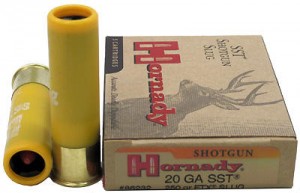


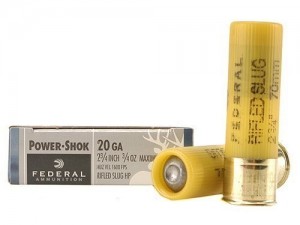
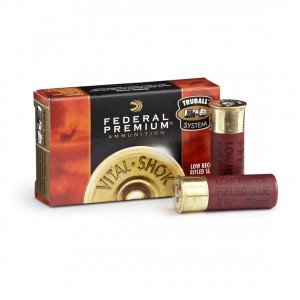
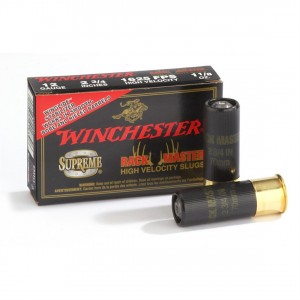
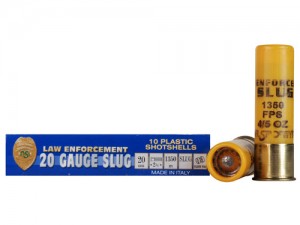
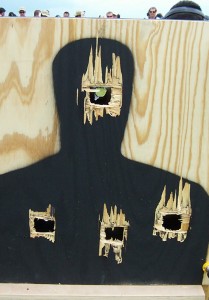


Pingback: A Case for the Modern Musket – the 20-Gauge Shotgun | Gun Toters